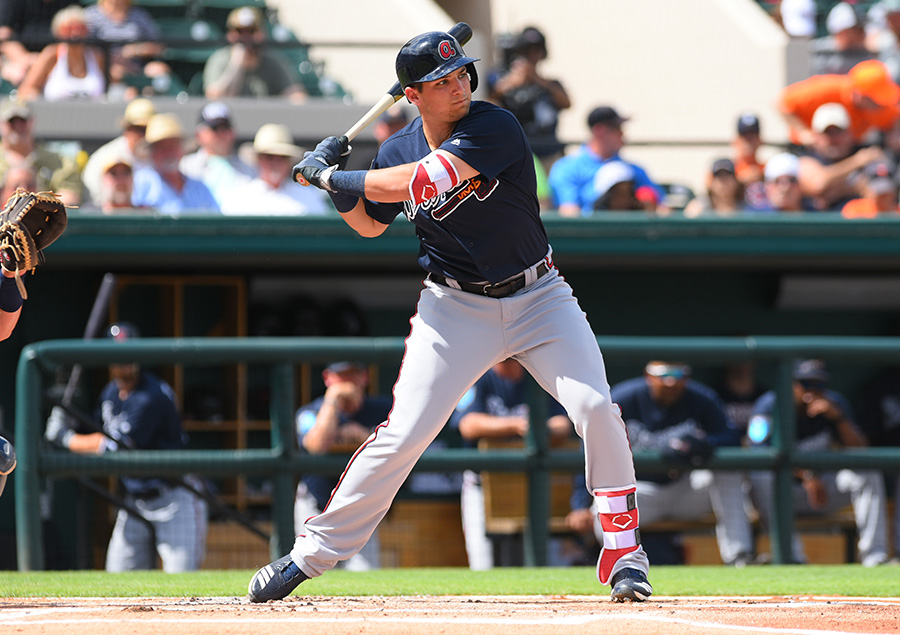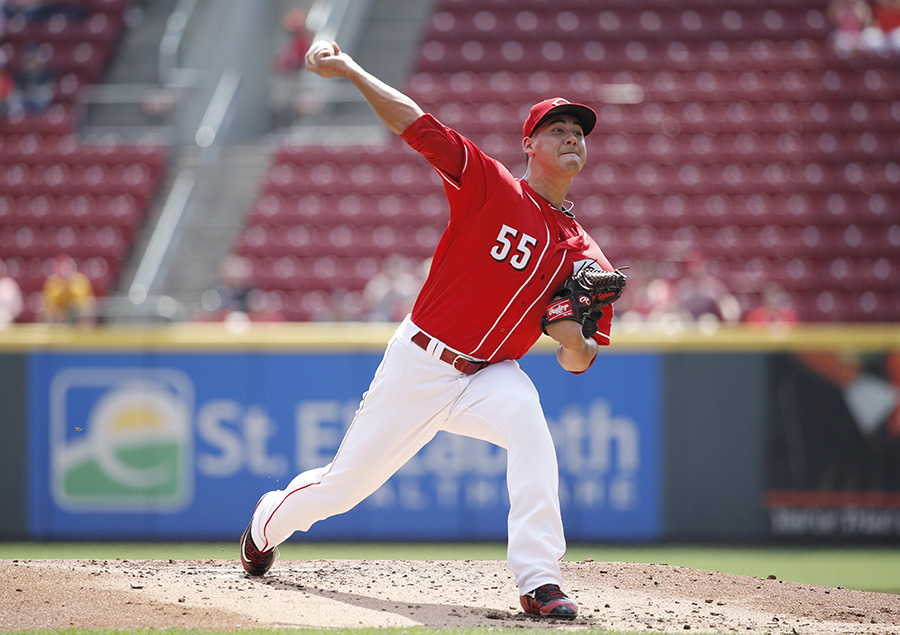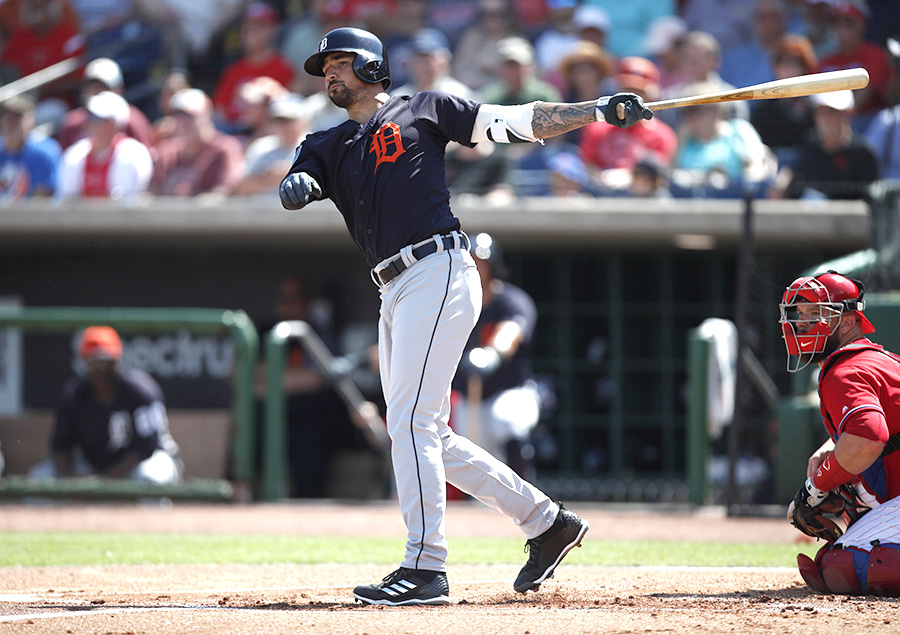State Of The Rebuilds


Fables Of The Reconstruction
One-third of major league teams are attempting to follow the tear-down template perfected by the World Series-champion Astros and Cubs
O
ne-third of major league teams are at some stage of a rebuild in 2018, whether they be just beginning, en route or ready to land. In this piece we update you on the status of each team’s rebuilding effort and discuss possible next steps, risk factors and an estimated time of arrival for the next contending team.
We begin with the ready to land rebuilds, because these teams figure to be relevant either this season or next.
REBUILDS READY TO LAND

Atlanta Braves
Rebuild Start Date: 2014-15 offseason. After posting their first losing season in six years in 2014, the Braves traded away Justin Upton, Jason Heyward, Craig Kimbrel, Evan Gattis, Melvin Upton, Jordan Walden, David Carpenter and Chasen Shreve.
Current Status:: Key players acquired in those trades, as well ones acquired in later deals for Andrelton Simmons, Shelby Miller and Mallex Smith, are in the majors, with Ender Inciarte, Dansby Swanson, Mike Foltynewicz, Sean Newcomb, Luiz Gohara, Rio Ruiz and Max Fried all primed to play roles for the 2018 Braves. That core is complemented by a farm system that ranked No. 1 in baseball the last two years, with the No. 1 prospect in the game, outfielder Ronald Acuna, set to debut this year.
Next Step: Round out the lineup. A talented group of young arms has reached the majors and another round in the minors will follow, but the Braves—who finished 11th in the NL in runs last year—need Acuna and third baseman Austin Riley to hit their ceilings in order for the offense to be postseason caliber.
Risk Factor: Reliance on pitchers. Even though the Braves have Acuna, Ozzie Albies and other promising young position players, both their major league talent base and their farm system are slanted heavily toward pitchers.
ETA: 2019 or 2020.

Chicago White Sox
Rebuild Start Date: December 2016. The White Sox pivoted toward a full rebuild at the 2016 Winter Meetings, trading Chris Sale and Adam Eaton on consecutive days. They followed by trading Jose Quintana, Todd Frazier, Tommy Kahnle, David Robertson, Melky Cabrera, Anthony Swarzak, Dan Jennings, Miguel Gonzalez and Tyler Clippard in summer 2017.
Current Status:: The White Sox have a group of young players in the majors and more on the way from the No. 4 farm system in the game. Trade acquisitions Yoan Moncada, Lucas Giolito and Reynaldo Lopez complement homegrown talents Carlos Rodon, Tim Anderson and Carson Fulmer, and most of the next wave—Michael Kopech, Eloy Jimenez, Alec Hansen, Dane Dunning—will begin 2018 at Double-A or higher.
Next Step: Continue developing the young players in the majors. They all appeared to turn a corner at the end of last year, and now the next wave will join them progressively over the next year or so.
Risk Factor: Timing. The White Sox have the most well rounded group of talent of any rebuild, limiting some of their risk. Still, ensuring everyone is brought up in such fashion that they can peak together is something Chicago will have to monitor.
ETA: 2019 or 2020.
REBUILDS READY TO LAND

Oakland Athletics
Rebuild Start Date: Fall 2014. After reaching the postseason for the third straight season in 2014, the A’s traded Josh Donaldson, Brandon Moss, Jeff Samardzjia and Derek Norris—all of whom were all-stars that season—and let Jon Lester, Jed Lowrie, Jason Hammel and Luke Gregerson leave as free agents.
Current Status:: Oakland has finished last in the AL West the last three seasons, but a glimmer of hope began to shine last year when Matt Olson, Matt Chapman, Sean Manaea and Kendall Graveman led a group of players in their 20s who established themselves as strong contributors. More talent is on the way, and could arrive soon, from a strong farm system featuring its top four prospects at Double-A or above.
Next Step: The first wave of talent has reached Oakland, and now preparing the second wave—Franklin Barreto, Jorge Mateo, Dustin Fowler, A.J. Puk—to hit in 2018 is a priority to fill some of the gaps.
Risk Factor: Willingness to spend. When the core rises and begins to perform together in the next few years, ownership will have to open its wallet in order to add the final missing piece. Based on recent A’s history, pessimism is warranted.
ETA: 2018 or 2019.

Philadelphia Phillies
Rebuild Start Date: Summer 2015. The Phillies took their first steps toward a rebuild by trading Jimmy Rollins and Marlon Byrd after the 2014 Winter Meetings and then went all-in during summer 2015, trading Cole Hamels, Jonathan Papelbon, Ben Revere and Chase Utley. The Ken Giles trade followed that December.
Current Status:: After five straight losing seasons—all of at least 89 losses—the fruits of the Phillies’ drafts and trades are now in the majors or close. Homegrown players Aaron Nola, Rhys Hoskins, Cesar Hernandez, J.P. Crawford and Aaron Altherr have teamed with trade acquisitions Nick Williams, Jerad Eickhoff, Jorge Alfaro, Ben Lively and Jake Thompson to give the Phillies an intriguing under-27 group of talent, with more on the way. The signing of Jake Arrieta this offseason further has them in position to start turning upward.
Next Step: Give everyone time. Hoskins, Crawford, Williams and Alfaro all have fewer than 350 career plate appearances, while only Nola pitched more than 140 innings last year among the young starters.
Risk Factor: Timing. The Phillies position player group is impressive, but if their young pitchers take too long to produce or hit their peaks—namely inconsistent arms like Vince Velasquez and Nick Pivetta—the window of the hitters’ best performance won’t match that of the pitchers.
ETA: 2019 or 2020.
REBUILDS EN ROUTE

Cincinnati Reds
Rebuild Start Date: Summer 2015. In the midst of their second straight losing season, the Reds traded Johnny Cueto and Mike Leake at the trade deadline, followed by Marlon Byrd in August. They made it a full rebuild in December, trading Todd Frazier and Aroldis Chapman.
Current Status: The Reds are coming off their third-straight 90-loss season and may be bound for another. Joey Votto remains an MVP candidate and some of the players they acquired in various trades—Adam Duvall, Scott Schebler, Eugenio Suarez, Luis Castillo—have produced, but struggles developing homegrown pitchers have the Reds in a bind. They had the worst ERA (5.17) in the NL last year and go into 2018 with largely the same group.
Next Step: Beyond Castillo, figure out which of the young starters—Robert Stephenson, Sal Romano, Anthony DeSclafani, Brandon Finnegan, Amir Garrett, Cody Reed, Rookie Davis, Jackson Stephens, Tyler Mahle—can actually be counted on for both health and effectiveness in the short-term as well as the long-term.
Risk Factor: Reliance on pitching. The Reds have productive position players and more on the way, but they won’t be competitive again unless at least four of their starting pitchers take a major step forward.
ETA: 2020 or 2021.

San Diego Padres
Rebuild Start Date: Summer 2016. After a failed playoff push in 2015 and an unsuccessful attempt at a redo to start 2016, the Padres traded James Shields, Fernando Rodney, Drew Pomeranz, Melvin Upton Jr., Andrew Cashner and Matt Kemp, all primarily for prospects, in June and July.
Current Status: The Padres’ first wave of young position players has hit the majors—Manuel Margot, Austin Hedges, Hunter Renfroe, Carlos Asuaje, Franchy Cordero, Travis Jankowski—and now they wait on their pitchers, with most of their projected future starters at Double-A or below.
Next Step: Bring the first wave of starting pitchers—Cal Quantrill, Joey Lucchesi, Eric Lauer, Jacob Nix—to the majors and give them time to get acclimated, and aim for promising middle infielders Fernando Tatis Jr. and Luis Urias to be ready at similar points.
The Risk Factor: Timing. The Padres’ position player group is mostly ready for the majors now, but the pitchers are not, and arms take longer than bats to acclimate to big league competition. If they don’t time it correctly, the Padres could have their position players and pitchers peak at disparate times, short-circuiting the rebuild and extending their playoff drought.
ETA: 2020 or 2021.

Tampa Bay Rays
Rebuild Start Date: Winter 2017-18. After being stuck in the middle with 77-80 wins in three of the previous four seasons, the Rays traded Evan Longoria, Corey Dickerson, Steven Souza, Jake Odorizzi and Brad Boxberger and let Logan Morrison, Alex Cobb, Steve Cishek and Tommy Hunter leave as free agents after 2017.
Current Status: The Rays enter 2018 without three of their top four hitters from last year, a concern for a team that finished 25th in the majors in runs. The Rays are in better shape than other teams just beginning their rebuilds because they have one of baseball’s top five farm systems, with quality position players—Willy Adames, Jake Bauers, Justin Williams—ready to help in 2018, as well as an intriguing group of young pitchers either in the majors or close.
Next Step: Bring up Adames, Bauers, Williams and possibly Nick Solak to get them acclimated, and continue to let the young pitchers—Blake Snell, Jake Faria, Anthony Banda—grow in the majors while Brent Honeywell recovers from Tommy John surgery.
Risk Factor: Willingness to spend. The Rays are on an accelerated rebuild path because of their upper-level talent, but it won’t matter if ownership doesn’t up the payroll to add final pieces when the time is right.
ETA: 2020 or 2021.
REBUILDS JUST BEGINNING
Detroit Tigers
Rebuild Start Date: Summer 2017. The Tigers began to break up their veteran core with the trades of J.D. Martinez, Alex Avila and Justin Wilson in July, and went full-steam ahead on a rebuild with their Aug. 31 waiver trades of Justin Upton and Justin Verlander.
Current Status: The stripped-down Tigers went 6-23 in September to secure the No. 1 overall pick in the 2018 draft, and it figures to be more of the same in the immediate future. The Tigers have an intriguing group of pitching prospects, but they are all years away from the majors, and they are short on impact bats in their system to replace Miguel Cabrera and Victor Martinez’s past production. Nicholas Castellanos and Michael Fulmer do give the Tigers a pair of 26-and-under tent poles to build around.
Next Step: Hit on the No. 1 pick, and add a high volume of impact position players to the system through the draft, trades and international signings.
Risk Factor: Maximizing value. If the Tigers don’t maximize the return on their future trades or miss on the consecutive top 10 overall draft picks they likely have coming, they will be stuck in neutral.
ETA to Contention: 2022 or 2023.

Kansas City Royals
Rebuild Start Date: Fall 2017. The Royals let Eric Hosmer, Lorenzo Cain, Jason Vargas, Mike Minor and Melky Cabrera leave as free agents after the 2017 season, starting anew as an organization.
Current Status: The Royals are in the awkward position of being one of the worst teams in the majors while also having one of the worst farm systems. Danny Duffy, Salvador Perez and Kelvin Herrera are keepers, as are maybe Whit Merrifield, Jorge Bonifacio and Adalberto Mondesi, but overall the Royals are short on talent. The late re-signing of Mike Moustakas, as well as one-year deals given to Lucas Duda and Jon Jay, do make the current team a bit better and gives them some additional trade ammunition.
Next Step: Hit in the 2018 draft with the five picks they have in the top 58, then make sure not to miss on the consecutive top 10—likely top 5—picks to come in the following years.
Risk Factor: Maximizing value. With a poor farm system and limited talent to trade at the big league level, the Royals will be almost wholly reliant on a long series of successful drafts to be competitive, which is never a guarantee. Getting positive returns on the few trade chips they have will be equally critical.
ETA: 2024 or 2025.

Miami Marlins
Rebuild Start Date: Winter 2017-18. The Marlins stripped down in dizzying fashion after the 2017 season, trading National League MVP Giancarlo Stanton, star mid-20s outfielders Marcell Ozuna and Christian Yelich and All-Star second baseman Dee Gordon.
Current Status: After eight straight losing seasons, another is likely ahead. Rookies could make up as much as one-third of the Marlins’ 2018 Opening Day roster, and their few remaining mid-20’s building blocks—J.T. Realmuto, Justin Bour and Starlin Castro—are reportedly on the trade block.
Next Step: Accurately assess which of the rookies bound for the majors this year—Lewis Brinson, Sandy Alcantara, Brian Anderson, Magneuris Sierra, Dillon Peters, Braxton Lee—are worth keeping in the long-term plan, and give the next wave—Monte Harrison, Nick Neidert, Isan Diaz, Zac Gallen—time to develop and see what they can bring to in the next year or two.
The Risk Factor: Willingness to spend. When the time comes to compete, Marlins ownership will have to shell out the money to add a veteran or two as the final piece. This could be a sticking point.
ETA: 2023 or 2024.

Comments are closed.